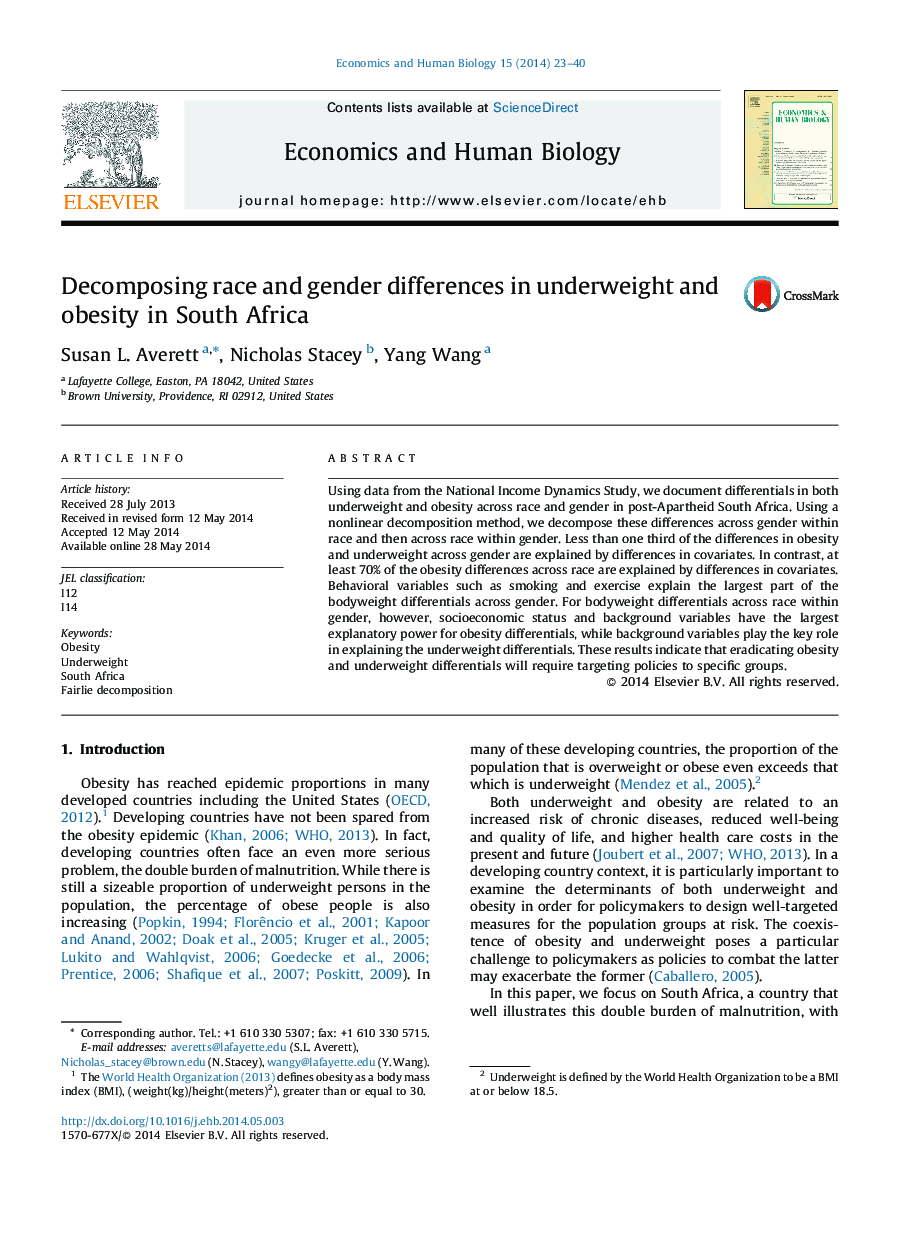| Article ID | Journal | Published Year | Pages | File Type |
|---|---|---|---|---|
| 5056987 | Economics & Human Biology | 2014 | 18 Pages |
â¢South African women are 6% less likely to be underweight and 27% more likely to be obese than men. Across race, differences are as high as 19% and 17%.â¢Less than one third of the bodyweight differences within race across gender in South Africa are explained by differences in covariates.â¢In contrast, more than 70% of the obesity differences within gender but across race are explained by differences in these covariates.â¢Behavioral variables explain most of the differentials across gender. Socioeconomic status and background explain most race differences.â¢Eradicating weight differentials across race and gender will take policies that are targeted to specific groups.
Using data from the National Income Dynamics Study, we document differentials in both underweight and obesity across race and gender in post-Apartheid South Africa. Using a nonlinear decomposition method, we decompose these differences across gender within race and then across race within gender. Less than one third of the differences in obesity and underweight across gender are explained by differences in covariates. In contrast, at least 70% of the obesity differences across race are explained by differences in covariates. Behavioral variables such as smoking and exercise explain the largest part of the bodyweight differentials across gender. For bodyweight differentials across race within gender, however, socioeconomic status and background variables have the largest explanatory power for obesity differentials, while background variables play the key role in explaining the underweight differentials. These results indicate that eradicating obesity and underweight differentials will require targeting policies to specific groups.
